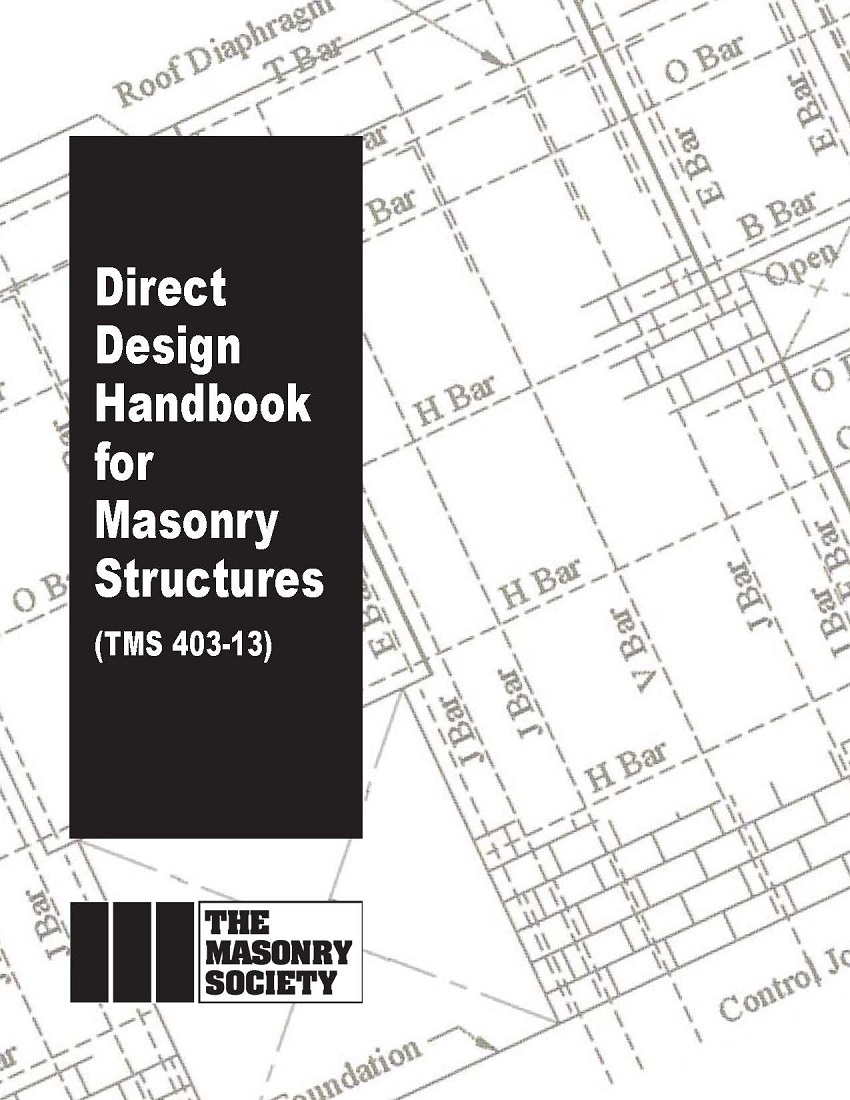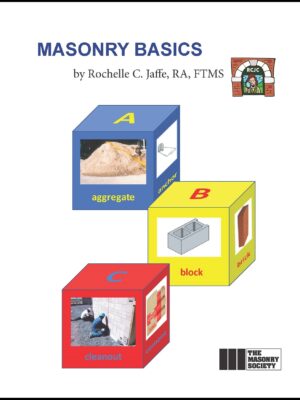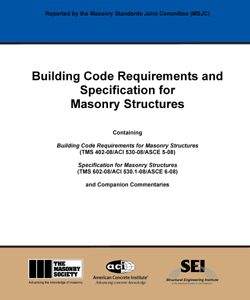Description
Direct Design Handbook for Masonry Structures (hereinafter referred to as the Handbook) was developed by The Masonry Society’s Design Practices Committee. This Handbook provides a direct procedure for the structural design of single-story, reinforced and unreinforced concrete masonry structures. The procedure is based on the strength design provisions of TMS 402-11/ACI 530-11/ASCE 5-11 Building Code Requirements for Masonry Structures and ASCE 7-10 Minimum Design Loads for Buildings and Other Structures. The document is applicable to both residential and commercial structures. So that users are required to do only minimal calculation, parameters are limited and design options are dictated. This Handbook applies to common structures over the vast majority of the United States including mapped ground snow loads up to 60 lb/ft2 (2.9 kPa), mapped basic wind speeds up to 200 mph (89.4 m/s), mapped seismic 0.2 second spectral response accelerations up to 3.0g, and mapped seismic 1.0 second spectral response accelerations up to 1.25g. This Handbook was developed as a consensus standard and written in mandatory language so that it may form a part of a legally adopted building code as an alternative to standards that address a much broader range of masonry construction. This Handbook was written so that architects, engineers, contractors, building officials, researchers, educators, suppliers, manufacturers and others may use the standard in their practice for various purposes.
Among the topics covered are reference standards, definitions and notations, site limitations, architectural limitations, loading limitations, material and construction requirements, direct design procedure, specifications, and details. The Commentary to this Handbook presents background analysis, details and committee considerations used to develop this Handbook. While not part of the legal requirements of this standardized Handbook, an Appendix providing an example of how to use the direct design procedure for a typical masonry building is provided following the Commentary.






